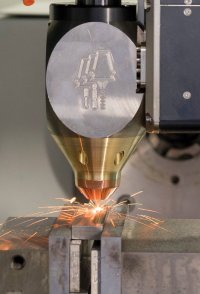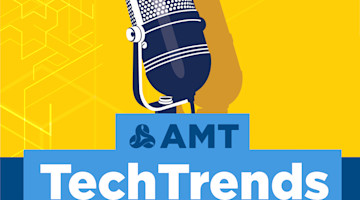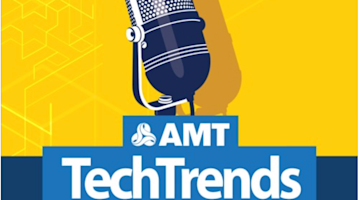The biggest and most near-term opportunity in AM right now is in hybrid manufacturing. Combining subtractive manufacturing with AM is an opportunity for customers, machine tool manufacturers, distributors, and integrators alike. AM is both compatible and complementary with CNC multi-tasking machines, where solutions range from retrofitting to new hybrid offerings. Hybrid machines then combine the design freedom of additive with the precision, accuracy, and speed of machining.
“What we have with machine tools is a very accurate, highly tuned motion platform that moves cutting tools around, and most 3D printers need a motion platform. It is a perfect combination and opportunity to merge AM into machine tools,” said Jason Jones, CEO, Hybrid Manufacturing Technologies. “Some are easier to integrate than others. For example, directed energy deposition (DED) is easy to integrate, and the machine tool is preserved as a mainstream machine tool, so additive functionality can be used as needed. Powder bed fusion (PBF), on the other hand, is more involved integration, and the result is a highly dedicated, specialized machine. The majority of the hybrid machines on the market now are using DED.”
Adding AM functionality to single CNC machines can yield many benefits and efficiencies. Operating costs are reduced because one machine can do the work that previously required multiple machines, and setup time is reduced since hybrid CNCs typically require just one setup for multiple additive and subtractive processes. It also saves floor space and reduces the need to send work out for additional processing.
HYBRID APPLICATIONS
The hybrid AM applications leading the market are applying coatings, repairing equipment, adding features, and growing parts, in that order. In short, the less material you have to add in AM, typically the better the business case.
It only takes a few minutes to put an additive coating on a part or piece of equipment, and this greatly extends its life. Coatings, for example, are added to impart desired characteristics, such as hardness. Adding a strong nickel-based superalloy to the edges of bronze molds makes them last much longer, while retaining the bronze for most of the mold still allows the desired heat transfer capability. New coatings reduce part replacement frequency, which alone justifies the cost. In many applications, because of the locations of the parts, the time required to disassemble the machine and take out a part is worth more than the part itself.
Repairing equipment also benefits from the addition of a higher performance material to increase its life, similar to the ROI for coatings. For instance, if an outer edge is the only area that must be repaired, such as on a blade, it is more cost effective to repair that than to buy a new blade to replace it.
“The low-hanging fruit is repair operations of expensive parts—machining out the worn or damaged portion and adding new material to that area,” said Joe Wilker, hybrid multi-tasking manager, Mazak. “For example, turbine blades and blowers used in mining equipment get destroyed very quickly due to their use in harsh mining environments. When adding the new material, the part can often be made harder by adding a new alloy, or multiple alloys.”
NEW CERAMIC MATERIALS
Another near-term opportunity in AM is for new materials. Ceramics are the newest AM material and are growing quickly. Ceramic materials possess many attractive properties, most significantly superior mechanical properties including stiffness, hardness, and strength at elevated temperatures as well as unique physical properties such as electrical and thermal conductivities and biocompatibility.
In many application areas such as aerospace, automobiles, and energy, ceramic materials are a superior solution because components and structures are subjected to high operation temperatures. Engine and propulsion components for aerospace, automobiles, and energy are being researched heavily for new applications.
MEDICAL APPLICATIONS
Dental applications have used ceramic materials for years, and now, both ceramic and non-ceramic materials are being developed through AM for medical implants and orthopedics.
“The medical industry is one of the most established in using AM to create patient-specific solutions and breakthroughs in medical devices, implants, dental, and surgical tools. As this space has matured, healthcare providers are looking to gain clarity on how they can best use AM, who the right partners are, and how the technology is evolving,” said Andrew Snow, senior vice president, EOS North America. “With each medical patient comes a unique set of requirements to delivering quality care. It also brings a unique set of challenges including complex geometries, functional integration, financial restraints, and compressed delivery times. And, while medical applications represent some of the most mature applications to use AM, the market is crowded, and it’s important to educate customers and end users on the right technology, software, and services to deliver optimal AM solutions in medical.”
GROWING OPPORTUNITIES FOR DISTRIBUTORS
Distributors currently have an open playing field in this growing market. The challenge is to strategically identify what products and services to add and how to add the most value. The best-positioned distributors will be those who understand all the technologies required to deliver an end use part—design through materials to printing—and how to realize ROI.
“There are so many companies and technologies out there right now that it can be very confusing to someone who is just getting into it,” said Gary Reed, sales engineer, Addy Machinery. “In addition to selling equipment, we provide consultative services to help our customers navigate the options. We invite customers in to learn exactly what they are trying to do, and sometimes they bring in a part designed in subtractive manufacturing to ask if they should start producing it through AM. We demonstrate the equipment and determine if AM is a fit for them. If it is, we produce benchmark parts that they can take back to their shop and try. We also calculate costs to determine ROI.”
Traditional machine tools are not going away, but there are valuable opportunities to include AM in the production process. There is growing opportunity in automotive-related markets; for example, in end of arm tooling, demand is growing for light weighting—using a strong, lightweight material instead of metal. Tooling can be printed quickly and inexpensively, and designs can be easily changed.
“Distributors looking to partner with AM equipment providers need to do their homework. It is important to research the companies in the market, talk to others in the industry, and make sure you are partnering with a company with a solid track record and reliable products that can back them up with service,” said Reed.






